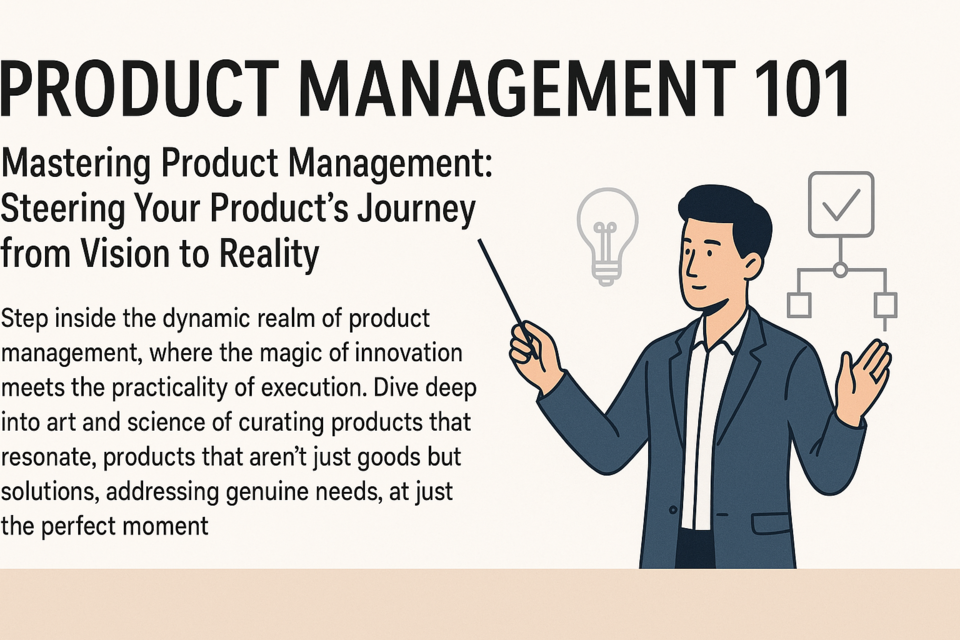By now, you realize that it will take some time and effort to create an effective policy and procedure manual. But what if you do all that work and nobody really reads it?
What if you can't know who reads it, and who doesn't? Kris Dunn, who writes the HR Capitalist blog, suggests testing your employees by sneaking some odd and unexpected information into your employee handbook. One of her suggestions is to state that employees who quit within three months of being hired will be required to wash the HR director's car once a week for six months. She encourages you to offer employees that spot the absurdity a prize.
That is one way to see who really reads your manual, but there are other ways to get the readership you want -- and need.
Remember that a policy establishes clear rules of what will be done, or not be done, in an organization. Policies range from broad philosophies, to specific rules. Procedures are the steps needed to follow through on that policy.
Despite our best intentions, we are all busy and want to read about what has a direct impact on our welfare. Your best bet for hooking the reader, then, is to write with your reader's best interests in mind.
Your manual's foreword or introduction is the most important component for hooking the reader.
b. Fifteen years ago, I started this company out of my parent's garage. I didn't need an employee manual. It was just me, after all.
Today, we have more than 5,000 employees in six states, and we need to simplify things. You're part of the XYZ team now, and we want you to know who we are and what we do. So we have created...
If you're like most people, you are more interested in the second introduction. It is more personal and interesting.
The document's foreword will set the stage for reader interest. Make sure it reflects the culture of your company and the professionalism of your management. An excellent place to start is by asking yourself the following questions:
Why am I writing this document?
How will it help the reader?
What action do I want the reader to take after reading the document?
The answers you come up with for these simple questions will help you create a manual that is both purposeful and meaningful.
After the introduction, it is time to focus on policies. Your first job is to make sure there is a real need for the policy, and convey that need to the readers. Then follow these steps:
1. Select a clear and simple title that reflects the policy's content.
2. Determine the date the policy will go into effect.
3. Assign the policy a version number, and increase that version number whenever you revise that policy.
4. Write a concise purpose statement for the policy.
5. Draft the complete, yet to-the-point, text of the policy.
6. Explain to readers to whom the policy applies, as well as the consequences of non-compliance.
7. Define any terms or acronyms that are unique to your organization.
8. Provide sources and contact information for workers to get help if they need it.
9. Cite any outside authorities that are responsible for the policies, or that require the policies.
10. Include any related forms, or other related policies and procedures.
Procedures
Procedures are the instructions that must be followed to comply with a policy. Procedures should be specific and easy to follow.
Here are steps to developing a reader-friendly procedure.
I. Assess the need for a procedure.
2. Research the best practices for this procedure for your industry. If needed, network with other organizations to find out how they handle this policy, or a similar policy.
3. Become familiar with the process yourself. Ask a colleague to help you go through the steps that are in the procedure. This hands-on experience will ensure that you explain the steps logically.
4. List the tools, equipment and materials needed to perform the procedure.
5. Draft the procedure in a simple straight-forward style.
6. Add any graphics that will help the reader perform the procedure. These can include drawings, photographs, charts, tables, and screenshots.
The graphics are not a substitute for clear text, however. They should only supplement what you have written.
7. Test the steps. Ask a co-worker to read, and to follow, the procedure. Take notes on anything that is unclear, or that could be misinterpreted.
8. Make revisions as needed.
You may be wondering about the appropriate length of a procedure. Well, keeping in mind that you want to be as concise as possible, there is no set length.
The length of a procedure really depends on the task you are trying to accomplish. Not only is a shorter, simpler procedure easier for the reader to follow, it is also easier to develop and to maintain for the writer.
Here is the format for an effective procedure. (You'll notice some similarities with developing the policy, itself)
� Procedure title. Select a simple title that accurately conveys the content of the procedure.
� Date. State the date the procedure will go into effect.
� Version number. Start with Version I, and then increase the version number whenever you revise the procedure.
� Purpose statement. Create a concise statement that conveys the purpose of the procedure.
� Application. Briefly describe to whom or to what the procedure applies.
� Text. List the steps of the procedure. (see more below)
� Definitions. Define any terms, phrases, or acronyms that are unique to your company or your industry.
� Sources. Provide resources and contact information where readers can go for assistance with the procedure.
� Authority. If the procedure is one that is required by an outside organization, or by legislation, cite the authority.
� Related forms. Include any forms or other policies that are related to this procedure.
Now, here are more specifics on how to write the text of the procedure. To make things easy for the reader, write the procedure as a numbered list.
Keep things simple and easy to follow by limiting each step to one task. Write each step as a positive command. Avoid vague or indirect statements, as they can be confusing.
Use the active voice (subject performing the action) and let readers know what to expect as the steps continue.
Obviously, you cannot anticipate everything that could go wrong, but do your best to anticipate common problems, and to address how to handle them in the procedure.
As you write, keep your purpose and your audience in mind. It will help you clarify your meaning. Here are some other tips to keep your reader engaged:
-
Be complete. Have you covered all the issues, and are the steps in the right order?
-
Be coherent. Does the policy or procedure reveal a logical process? In other words, does it make sense?
-
Keep it simple. Limit paragraphs to one topic each, as much as possible, and write sentences of 25 words or less.
Avoid using empty words (such as "very," "highly," or "extremely") or using several words in the same sentence ("easy and simple") that mean the same thing. Redundancy turns off the reader.
Here is a list of common redundancies and how to correct them:
Use this Not that
experience actual experience
planning advance planning
any any and all
as a rule as a general rule
combine combine into one
consensus consensus of opinion
status current status
varieties different varieties
each each and every
outcome final outcome
priority first priority
meeting group meeting
pitfalls hidden pitfalls
truth honest truth
December month of December
requisite necessary requisite
only one and only
the same one and the same
plan overall plan
experience past experience
history past history
opinion personal opinion
time point in time
postpone postpone until later
refer refer back to
repeat repeat again
example specific example
this instance this particular instance
facts true facts
whether or not whether
-
Keep it active. Whenever possible, use action verbs to engage the reader.
-
Keep it positive. Share positive results of following policy, as much as possible.
-
Use Arabic numbers. Studies show Roman numerals can be confusing.
-
Be polite. However, avoid the overuse of the word "please." A policy does not ask for action, so "please" is unnecessary. A procedure gives instructions that must be followed, so, once again, "please" is superfluous.
-
Avoid "etc." Introduce a list of examples with the words phrases "for example," or "such as," and then leave it at that.
-
Leave out the Latin. As much as you may like them, Latin abbreviations "i.e." (that is) and "e.g." (for example) can confuse your readers. Use the English phrases.
-
Watch out for lefties. Did you know that left-handed people comprise 13 percent of the population? Keep that in mind when you give directions.
-
Use gender-neutral language. If you find using "he or she" and "him or her" awkward, you can try re-writing some of your sentence to avoid pronouns. You can also use plural pronouns "they," or "them," which are not gender specific.
-
Use bulleted lists. Lists help break up information into easily digestible chunks. Lists can help your reader see and understand your main points.
-
Use the words "note," "caution," and "warning" in a consistent way. A note is a suggestion for how to carry out a task. Notes do not include steps or safety information.
A caution indicates potential for damage to equipment or an injury to an individual. A warning indicates the potential for serious injury or possibly death to individuals.
Training sessions. Another way to hook your reader is by tying in the content of your manual with your employee training sessions.
Find ways to integrate the content of the manual with your employee induction program. Ask staff members who run the training sessions to identify specifics from the manual and to focus on that material during the session.
Seek hands-on training methods that communicate and reinforce important messages from the manual through active learning. Research backs up the idea that students retain information better when it is taught through a combination of activities and reading, rather than just reading, or just listening.
A study conducted by North Carolina State University, for example, concluded that students remembered more content when brief activities were part of the lecture presentations.
Depending on your organization and your industry, your employees may need training sessions in order to fully understand and follow certain policies and procedures. These training sessions are especially important when employee and/or customer safety is involved. You may be able to combine your new manual with a PowerPoint presentation in these cases.
Here is an example of a poorly-worded policy to help you review points on hooking the reader. How many problems can you find with it?
"Excessive tardiness will not be tolerated, and anyone who comes in late three times will be written up and a disciplinary notice will be placed in his HR file."
This policy contains negativity, the passive voice and a gender bias. It also is one long sentence. Let's try a re-write, using some of what we have learned in this article.
Since frequent tardiness affects the productivity of our entire team, we ask that you come to work on time and ready to work. You are tardy when you are more than six minutes late for a shift.
Supervisors will issue a disciplinary notice to employees who are tardy more than three times in a three-week period. This notice will go into the HR file."

























